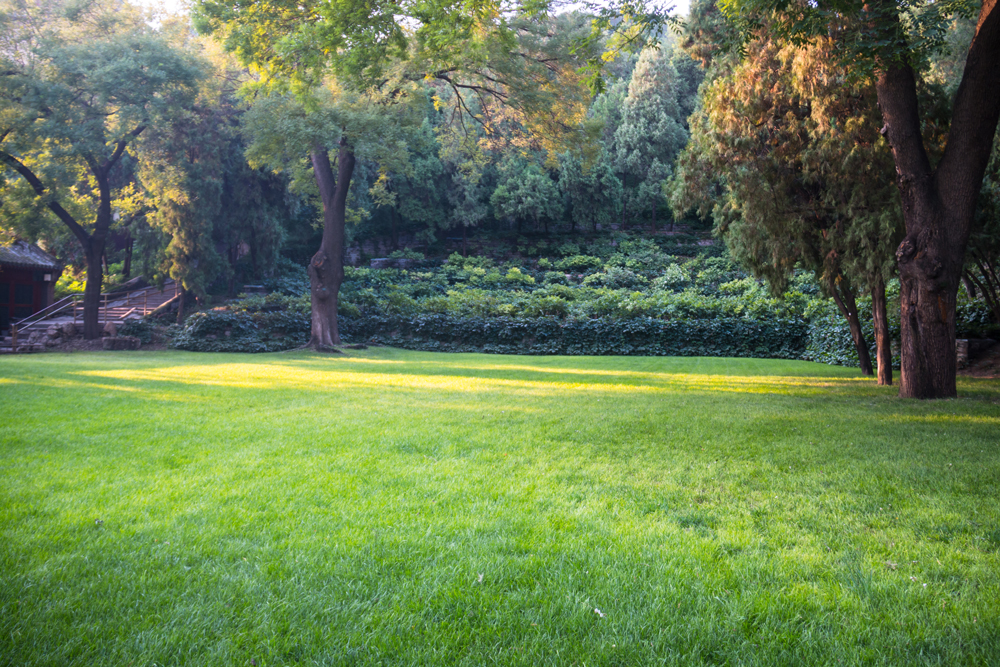Like a Desert Rose
A quote attributed to one of Utah’s first settlers predicted that they would “till the desert [until] it blossoms like a rose.” Nearly 200 years later, we have a valley that is flourishing like an oasis, just as predicted. Our cities are green, our people are happy, and we are rich with opportunities to beautify our state even more with superior gardening and lawn care programs.
Not all that glitters is gold, however. Even in prosperity, complications arise. One of the biggest challenges that we deal with in Utah’s lawn care profession is that of diseased foliage, particularly of trees and shrubbery. Like any of the typical garden sicknesses, it’s hard to know where they originate but we are certainly familiar with their symptoms and results.
Every avid gardener should be aware of these diseases in their yard’s plant life.
Diseases
Despite the healthy vegetation springing up all over the state, there is still a wide catalog of diseases that we at Lawngevity see quite frequently. Some of the most common include:
Anthracnose
One of the most widespread floral diseases in Utah, anthracnose is a cautionary tale of what can happen when you don’t stay on top of your raking in the autumn months. This particular disease is caused when fungus grows in piles of wet and dying leaves that have been allowed to build up over weeks and months as the air turns colder.
The fungus can make its way from the leaves pile to a healthy tree in no time, causing an outbreak on all the living specimens. Symptoms include:
- Browning, dying leaves
- Leaf spots
- Dark, sunken spotting on fruits and vegetables
- Dead branches and spotted trunks
Even though it can spread quickly during inclement weather, we have special sprays that we can use to stop its growth and heal the trees.
Aspen Leaf Spot
Also known as Marssonina leaf spot, this strain of disease appears in the late summer or early autumn. It is another fungal-based pathogen that affects all types of poplar trees, including the aspen and the cottonwood. Much like anthracnose, marssonina can survive on fallen leaves until the Spring.
Symptoms are similar to our previous disease:
- Bronze or rust-colored spots appear on the leaves
- Branches and twigs prematurely drop their leaves, as their growth becomes stunted
- Fungus begins to sprout from each of the spots
If caught early, a gardener may be able to prune the affected branches and save the tree. Creating space in between the trees will also slow their growth. It’s important to remember that one should not compost infected leaves after raking them up. Sprays are also available.
Cytospora
More commonly known as Perennial Canker, cytospora is often found in fruit trees like peachtrees, cherry trees, and apple trees, but can also infect broadleaf trees. This disease is a type of parasite that enters the tree from any type of wound in the trunk, such as a gash by a yard tool or the burrowing of an insect.
Once infected, the tree creates spores that are then blown on the wind until they land in a new place where the parasite waits for another opening on the trunk. Symptoms include:
- Craters on the trunks that appear gray and hollow
- Tiny bumps that cover the wood, appearing as a kind of gooseflesh
- Brown or orange masses of spores that have grown from ruptures on the trunk
The best means of prevention is to ensure that your trees are getting plenty of water and that dead or distressed branches are being pruned. Making sure that you are also on a regular schedule for pest spraying is also highly recommended. Be sure to separate and cover woodpiles.
Chlorosis
This disease typically occurs not as the result of a foreign infection but from an internal lack of iron, usually siphoned out by soil with a high pH level (usually above 7.0). It is recommended that you conduct a soil test to see if an iron deficiency is the problem before treating for chlorosis, in case, by treating the healthy soil, you inadvertently harm the trees.
Symptoms may look similar to other aforementioned diseases. They include:
- A premature yellowing of the leaves with deep green veins
- In advanced cases, the leaves may turn white
- The edges of the leaves will appear scorched
Chlorosis commonly appears in areas of low precipitation and therefore might be more common in cities away from the mountains. Methods of prevention can be tricky, as many of the most popular trees seen by Utah lawn care experts are susceptible to iron deficiencies. Fully transplanting the tree in better soil might be necessary. Treating the soil by applying iron sulfate to trouble areas is the best way to combat early-onset chlorosis.
When it comes to the best foliage and lawn care programs in Utah, Lawngevity has the tools, the talent, and the experience to both identify and treat these diseases. Contact us today for a free bid to service your yard.


